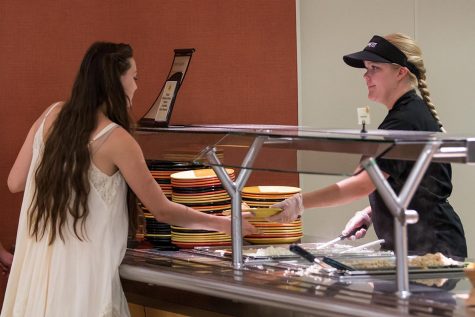The virtual world is changing the modern church
Online churches have led to a decrease in weekly attendance.
January 12, 2022
When COVID-19 first began in the U.S., people were advised to remain indoors to ensure their health and safety until things could return to normal. Now, going into 2022, most quarantine practices are still in place.
This enduring change is apparent especially in churches all over the country. Most churches have established some form of virtual service. Churches more technically inclined provide a live feed for virtual attendees, but others simply record the service to be placed on their website or YouTube channel. These online worship opportunities might be seen as a positive—people can still tune into services from the safety of their homes. However, the past years have shown that virtual services had a negative impact on church attendance overall and other aspects such as new church implants.
CHURCH NUMBERS DWINDLE
Faith Communities Today conducted a survey released in 2020 where it discussed the steady decline in church attendance over the last 20 years. According to this survey, the median attendance size decreased by over 50%. In fact, it looks like churches are seeing sixty-five attendees or fewer during any given weekend service.
Out of 350,000 churches, 175,000 have seen smaller groups walking through their doors for worship. Religious News Service reported that out of 34 protestant denominations, 4,500 churches closed while only 3,000 were started. Lifeway Research compared these findings to a previous study completed in 2014 that showed opposite results. In the 2014 study, 4,000 Protestant churches were planted compared to 3,700 that had closed.
THE FUTURE OF CHURCH ATTENDANCE
One major downside of the lack of church attendance is how it can discourage new members from attending a specific church. I recently moved to a new city, and my husband and I needed to find a new church. We found one but we were disheartened at the absence of community. During our last service, we saw as few as 20 people physically in the church. The pastor greeted those who were joining us online and asked them to participate just as they would if they were physically present.
Virtual attendance has become a norm in modern worship. There is little to no incentive for someone to come to the church and join the congregation body in community worship. Sunday services are not the only part of the church that has gone online. Bible study groups, devotional groups and community groups have turned virtual as well.
This is an overarching issue regarding socialization in general. Social media, online education and now online worship could reduce the desire to have a face-to-face conversation with anyone. Spiritual well-being is at stake as the continued lack of physical interaction weakens fellowship in the body of Christ. It is necessary for people to have a personal church community each week to nurture their relationship with God and other members of their church.
Church is much more than sitting in front of your computer screen. There is a level of depth and growth that is found in person. Perhaps a push from our church leaders will bring us back to what community worship is meant to be.







